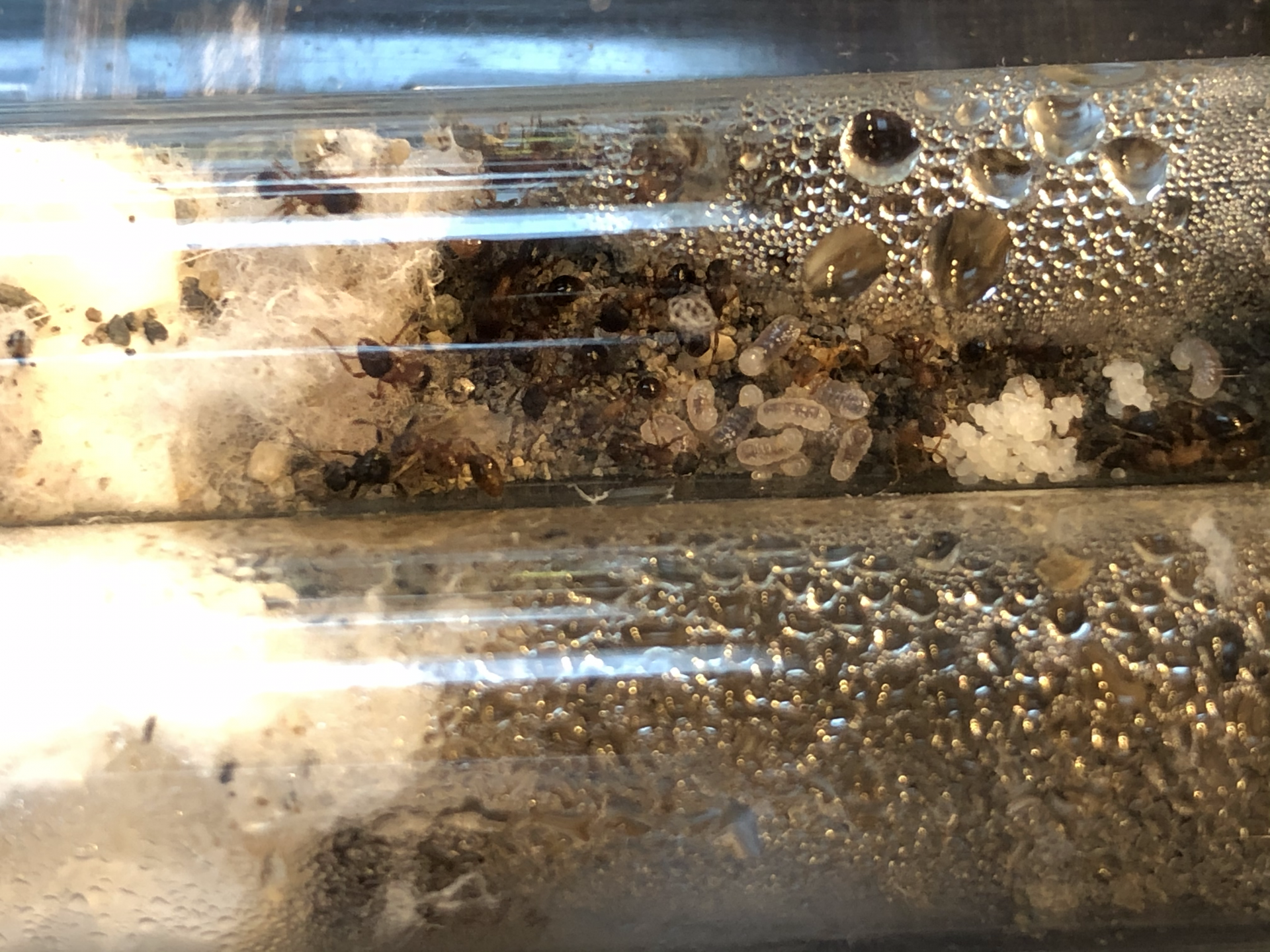Found a dealate Myrmica incompleta queen on March 19, at the edge of thier range by the trail. She was hibernating under a piece of wood and measures 7mm.



Queen compared to a M. specioides queen found on the same day.
Compared to the M. specioides these queens are much less skittish and also lay eggs readily, they also don't mind the light all too much.
A colony portion I kept before made from queens and workers of different locales took no time to settle and lay eggs, had constant skirmishes between workers, built odd chamber like structures and had a dealate queen mate with a male. Housed them in a test tube setup with wet paper, died of dessication moved them to a dirt setup, lived longer and then died. Workers kilometers apart would get along or kill each other. They tended to leave queens alone for the most part. Really prone to dessication.

Ignore the pea, I was just wondering if they would tend the aphids on it. Pic from July 17, 2017.
This species is also clearly polymorphic compared to other Myrmica species I've come across. Workers collected during a trip on March 28 from 2 locations around less then a kilometer apart and foraging on the trail ranged <.3.5mm at their smallest (spread out) and ~6mm at their largest (spread out). I think this is the largest worker I've ever found of the species, en average the workers are anywhere from 3.5mm to 5.5mm with most being around 4.5-5mm. Workers varied in hue from black to dark red for the head and gaster, coupled with the dark red to red or orange mesosoma meant that workers were either bicoloured with a dark head and gaster + red to orange mesosoma or a concoloures reddish colour.






Major, median and minor to the left of the sugar water droplet.
Queens of this species varied from complete black to black with red petiole and post petiole and red highlights on the propodeum winding down below the mesoscutum. Similar to what you would find on a Camponotus herculeanus queen. Legs were always a dark red colour interlaced with black. The red colour was more pronounced on smaller queens. Queens ranged from 6.5mm to around 7.5mm.
Stings are visible on the queens and larger workers. Compared to M. specioides the sting is somewhat more painful on delivery but subsides almost instantly. Afterwards rather then itching the muscles in the area all tense up. It doesn't last long however and goes away within a few minutes. Doesn't really cause any welts either.
Males are also slightly polymorphic (5mm- 6mm). Compared to M.specioides they also looked more robust. I've only ever found maybe around 4 males in total and only ever got to look at one up close.
Some terrible microscope photos but I'll just throw them in there anyways. There are a few more but I can't remember if those were for M. specioides or M. incompleta so I'll just leave them out.



Setting them apart from other Myrmica: "Frontal lobes angular, strongly expanded laterally and slightly deflected downwards towards the scape, their widest point at or posterior of antennal insertions". The rugae matched that more of M. incompleta then M. alaskensis, also location (for M. alaskensis it's more inland down here and more north in general) compared to M. incompleta which is more widespread. Also: "...average size of workers at least 4.5 mm;.." compared to M. aleskensis which has an average worker size of 3.5mm. I'm fairly confident these are M. incompleta, but I'll be sending the specimens above to be IDed.
Edited by LC3, July 14 2020 - 5:40 PM.




















